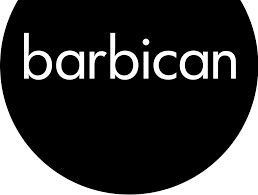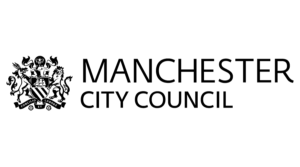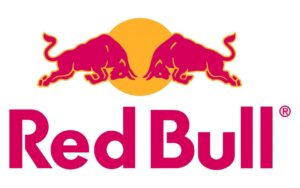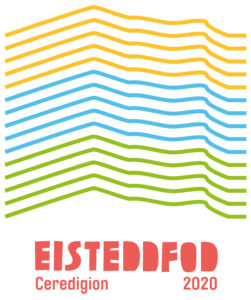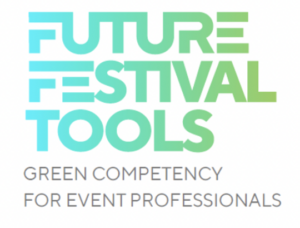In the UK 10 billion single-use plastic bottles end up in landfill each year, and millions of single use cups used to serve pints at event share the same end of life. In the wake of last year’s explosion of concern about plastic, drinks packaging has become a hot topic. Naturally, event organisers are searching for good alternatives, but it’s often unclear what are the best choices – a week doesn’t go by without a question about packaging in my inbox.
The sector is taking action on single use. Sixty five AIF festivals pledged to eliminate single use plastic by 2021, and forty percent stated they have stopped selling drinks in single use plastic in 2018. Glastonbury have also announced that they have banned single use plastic drinks bottles in 2019. The principle sources of single use at event are typically bar cups, drinks sold over the counter, food serve-ware and tents. In this column I tackle only the bar cups and drinks packaging.
Guidance for how to manage materials with the least environmental impact is provided by the European Waste Hierarchy – we’ve all seen a version of the triangle with ‘refuse > reuse > recycle’. This is actually based on an EU Directive.
The lowest impact way to consume in most situations is to use reusable containers for drinks, or any other products for that matter – think milk bottles in the 1950’s. The more times they are used, the better they are compared to a single use item, in principle. An example of this is reusable hard plastic bar cups at events. The environmental benefits compared to single-use cups is now well-evidenced. It may feel intuitive that heating water for washing and transport might outweigh the impact of creating a new disposable cup, but it isn’t the case. Many festivals are encouraging audiences to bring water bottles and providing refills onsite. This is the best environmental option for water, but doesn’t work for many other products. It can also compromise revenue streams and may pose logistical challenges.
Another approach is ‘circular economy’ – using a material, capturing it to reuse or recycle, and using it again. This is the antidote to the current linear journey that many materials take in our economy; extracted, transported, manufactured, purchased, used – often for a very short time – and then landfilled or incinerated. There is a fantastic series of videos about this called The Story Of Stuff – check it out online.
Many events have chosen to use aluminium cans, a decent ‘circular’ choice (supported by Greenpeace), as although the energy required to create the can is greater than a plastic bottle, aluminium has high value, thus is reliably (and endlessly) recycled. There is an impact from the energy used to recycle, but it’s 20 times less than creating a new can. In future we will be able to meet energy demand through renewables, so the use of electricity itself will become less of a problem.
With the exception of PET and HDPE bottles many types of plastic packaging are not widely recycled in the UK, and in many cases are ‘down-cycled’ – i.e. recycled into a lesser grade product – or exported to be recycled. If you need to use single use plastic, it’s a good choice to use recycled PET (rPET) or HDPE and have effective recycling collection in place.
Many companies are investing in or advocating ‘closed loop’ models, where they aim to capture their own branded containers/materials and recycle. Done effectively at scale, albeit challenging in an event environment if we are honest, this could be a valid circular approach, and could provide an impetus to recycle more effectively, but mostly it’s gimmick by companies turning bottles into furniture and the like to avoid changing their core model of using single use and disposable packaging. We must also consider that for some products (for example wine bottles) sometimes plastic might be the only option in the short term for various reasons, such as not allowing glass on many event sites.
Perhaps surprisingly, Tetrapak as a material performs well in Life Cycle Analysis, and it has become widely recycled.
A great source of confusion is the myriad ‘bioplastic’ products on offer as alternatives to plastic. The various, often technically legitimate claims about ‘biodegradability’ or ‘compostability’ distract from the fact that the majority of UK waste facilities cannot process the materials (for example the period of time required to biodegrade is typically longer than a commercial composting process), leading to it being landfilled or incinerated. In land-fill it can be a source of methane as it breaks down, so incineration is typically the better option.
In addition, the use of these materials in a festival ecosystem – and in wider society – typically confuses consumers as it looks exactly the same; is it plastic or bioplastic? This can contaminate recyclable plastics and waste facilities currently don’t have methods to tell them apart effectively.
Recently, products are emerging that claim to be completely compostable within short period of time in ‘natural conditions’ and in water. They may be compatible with commercial composting. Globally this may be a positive innovation, and may be a solution to reducing toxic plastics entering the ocean and ecosystems.
So, what is the best option? Unfortunately there isn’t a simple answer that fits every situation, but there are some robust guiding principles. Reuse is the best environmental option in many cases, and as a principle sits high up in the waste management hierarchy. Bulk dispensing of drinks (e.g. opting for bulk soft drinks dispensing rather than single use items) into reusable cups or containers is a great option, and should be aimed for.
If you can’t use reusable containers, consider using aluminium cans for drinks to avoid plastic – until there is a credible alternative. If you do need to use plastic, use rPET and put in place systems to effectively capture and recycle.
Some events choose paper cups, which are lined with either PLA or plastic. Current research suggests a reusable plastic cup is better than a paper cup after 9-14 uses. However, this analysis is based on incineration of the cups, and to date, this has been the only available option for disposal in the UK, unless you can send them to one of only two specialist recycling plants in the UK that can accept them.
If you can guarantee a closed loop, that is you can capture effectively separate materials, using a bioplastic or paper cups could be a reasonable option if – and it’s a big if – you have a credible end of life solution in place. In the vast majority of cases there is not currently a credible end of life solution which is why this is generally a bad option.
The most important thing is to always check what materials your local waste facilities can process, or research what other end-of-life solutions are available, and use this information to decide what are the best materials to use at your event. One thing that is certain is that event organisers need to be savvy about what happens to their waste if they intend to make responsible decisions about environmental impact.
For a more detailed information on this topic check out RAW Foundations’ Making Waves Guide to Plastic Free Festivals and Events, which is available online at https://raw-bottles.org/how-raw-bottles-helps-festivals-go-plastic-free/





